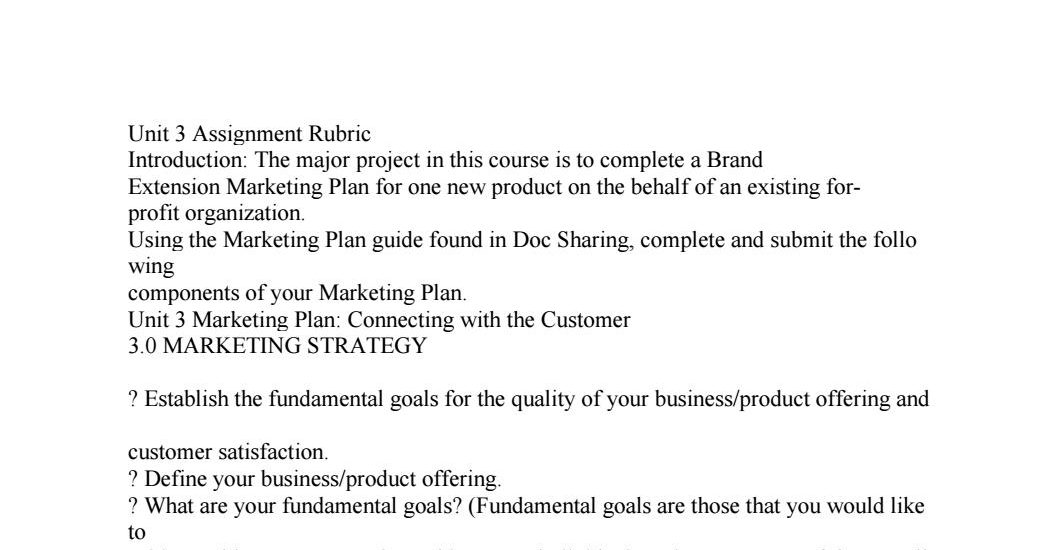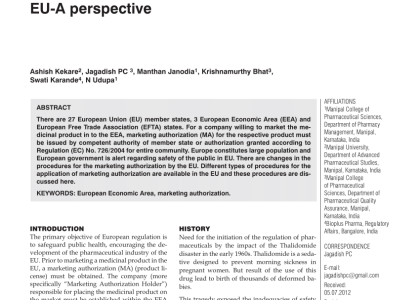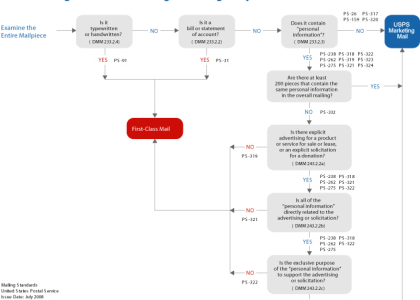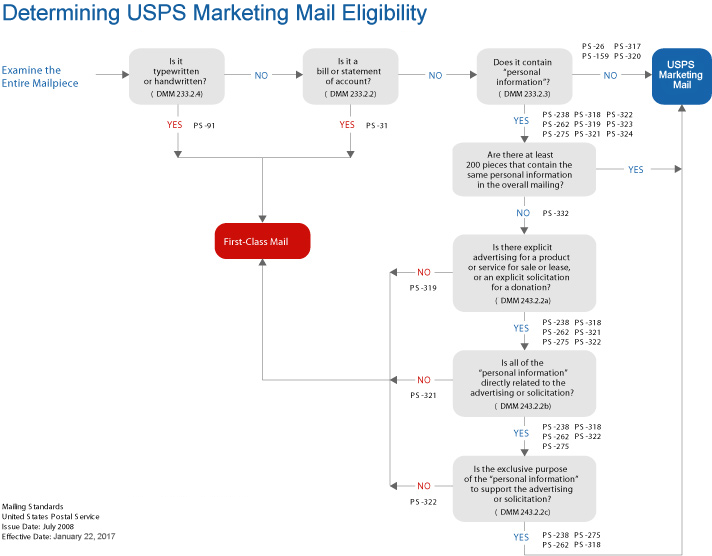Delving into the endlessly fascinating field of marketing requires an unwavering comprehension of its purpose. Despite its multi-faceted nature, it can be boiled down to one fundamental goal which we will explore and dissect in this comprehensive guide.
The primary ambition of any marketing strategy walks a straightforward line: to resonate with potential buyers, sway their decision-making process, and direct them to your product or service. Sounds simple at the surface, doesn’t it? However, with the ins and outs of varying market demographics, diverse consumer behaviors, and fierce competition, practical application becomes a much more complex picture.
As such, having a thorough understanding of this scope is paramount from both career and business perspectives. The ability to define and execute effective marketing strategies based on this understanding can significantly enhance the conversion rate, customer satisfaction, and ultimately, a company’s bottom line.
In the following discourse, we delve deep into the essence of marketing – its main aim, what it takes to achieve this aim successfully, and how to apply the learned theories in real-world marketing scenarios. We seek to provide an all-encompassing manual for individuals who are eager to truly understand the beating heart of marketing and augment their marketing knowledge to strategically steer towards success.
Comprehending the Essence of Marketing
Defining Marketing
Simply put, marketing is an essential business concept that integrates business activities to meet and satisfy the needs of customers. It is a mechanism through which services and goods progress from the ideation phase until they reach the end-user.
The ultimate goal of marketing is to generate interest in your goods or services, create demand and convert those interests into sales, which ideally leads to profit growth and business expansion.
It’s about understanding the wants and needs of your market and creating strategies to meet them.
In addition to sales and advertising, marketing comprises numerous elements; for instance: market research, public relations, social media, and customer service. It is not limited to one entity but spans through different sectors that aim to cultivate a beneficial relationship with customers to drive sales and promote brand loyalty.
How Marketing Functions
Marketing functions revolve around enhancing product visibility and influencing consumer behaviour. The fundamental basis of marketing is to identify, satisfy, and retain customers, thereby ensuring business longevity.
- The process starts with identifying customer needs through market research.
- The collected data guides businesses to create products or services that align with customer needs.
- Marketing then works to establish a connection between the potential customers and the business’s products or services using strategic communication tools.
- The end goal of these functions is to retain the customer by keeping them satisfied with high-quality customer service.
Overall, marketing is an integrated system aimed at developing and keeping a positive company image, interacting with the target audience, and cultivating strong and lasting relationships with consumers, thereby fostering a cycle of customer satisfaction and business success.
Understanding the Core Strategies of Marketing
Marketing is a broad discipline, but a few central concepts form the backbone of any successful marketing strategy. Grasping these basic tenets is crucial to comprehensibly unlocking the potent power of marketing
Customer-Driven Approach
Listen to the customer. This might appear as an obvious concept, however, it is pivotal that companies customise their initiatives based on the demand and needs of the consumers. A customer-driven approach enables organizations to offer products or services that hold real value for their target audience. Engaging with customers to garner feedback and modify marketing efforts accordingly, lies at the heart of this approach.
Clear Communication
Marketing’s primary job is to convey the right information to the right people in an interesting and captivating way. Clear communication is absolutely imperative. The message should be transparent, concise, and easy to understand, without losing the gist of the product or the brand message which is being conveyed.
Market Segmentation
Market segmentation involves dividing the broad market into subgroups of consumers with similar needs, characteristics or behaviours. Companies should never treat all customers similarly as their preferences can dramatically vary. Identification, targeting and positioning are three main components in market segmentation.
Competitive Analysis
A competitive analysis is an analysis of the competitive nature of the market. This helps organizations to understand the landscape and make the best decisions about how to engage customers. This principle includes understanding the strengths and weaknesses of competitors and determining the business’s own comparative advantages.
Consistency
The final principle to take into account is consistency. Every part of a marketing campaign should be consistent with the brand and its values, to construct a coherent image and encounter for the customer. Consistency fosters trust and increases the brand’s recognition in the market place.
An In-depth Exploration of Marketing Objectives
Unraveling the Motives behind Marketing
To comprehend the underlying objectives of marketing, it is crucial to strip down to the basic essence. The principle motivation for marketing is to identify, capture, and retain the interest of a particular target audience towards an offering – a product, service, or brand. This, in its entirety, is task-oriented to achieve certain business outcomes.
Strategic goals lie at its core. They are defined with focus on aligning the marketing objectives with the overarching goals of the organization. This end-goal centric approach dictates the entire operative plan and influences the choice of tactics, be it promotional activities, market research, or customer relationship management.
- Establishing brand recognition and fostering brand loyalty
- Acquisition and retention of customers
- Boosting product/service sales
- Encouraging customer engagement and fostering repeat business
A structured marketing plan, therefore, encompasses an array of intertwined objectives, that driven by a single, broader organizational objective. Each goal is SMART: Specific, Measurable, Achievable, Realistic, and Time-bound.
- Specific: Clear and precise about what is to be achieved
- Measurable: Quantifiable and trackable so that success can be evaluated
- Achievable: Something that can be accomplished within the stipulated resources
- Realistic: Practical and attainable, keeping in mind the market scenario
- Time-bound: Goals tied to a timeline, setting a definite target date for completion
In conclusion, the fundamental intent of marketing endeavors is to generate value both for the business and the end customer. It is a symbiotic relationship where the user finds solutions or benefits from the offering, while the business profits from revenue generation and market positioning.
The Significance of a Well-Planned Marketing Approach
When it comes to effective business promotion, a comprehensive marketing plan cannot be underestimated. With competition on the rise, a well-crafted, strategic marketing approach isn’t a luxury anymore – it’s a necessity.
One of the key benefits of a strategic marketing approach is that it enhances brand awareness among the target audience. It enables businesses to reinforce their brand image and values, thus creating higher visibility and recognition. In addition, customers are more likely to trust and remain loyal to brands that demonstrate consistency and authenticity in their promotional efforts.
Another important aspect of an effective marketing plan is its ability to drive customer engagement. Interactive marketing strategies not only attract new customers but also stimulate the active participation of the existing customer base; thus, fostering loyalty and engendering repetitive business.
Elements of a robust marketing approach
- Market Research: The first step in any marketing strategy involves intensive market research. Understanding the target audience, their preferences, habits, and needs is crucial for devising effective marketing campaigns.
- Competitive Analysis: By analyzing the strengths and weaknesses of competitors, businesses have a chance to learn from their successes and failures. This could involve the study of their marketing tactics, product offerings, and customer service strategies.
- Unique Selling Proposition (USP): A compelling USP differentiates a business from its competitors. It highlights what makes the business or its products superior and worth choosing over others.
- Marketing Channels: Depending on the target market, businesses may choose to leverage one or more marketing channels. This could include social media, email marketing, content marketing, search engine optimization (SEO), and more.
Therefore, the merit of a well-planned marketing approach is unquestionable. Not only does it help businesses to connect with their target audience effectively, but it also enables them to outshine competitors by delivering superior value.
Importance of Marketing Research in Achieving Strategic Marketing Objectives
Building and executing an effective marketing strategy requires solid foundational knowledge and insight derived from comprehensive marketing research. The central role of marketing study in the attainment of advertising goals can’t be overemphasized. It provides an evidence-based approach and greatly influences strategic decision-making processes.
Market research primarily aids in identifying existing market opportunities and gauging potential risks. It employs scientific and analytical methods to gather valuable insights into customer behavior, competition, market trends, and product performance. These insights aid in making informed decisions and strategic planning, thereby enhancing the likelihood of achieving marketing objectives.
Key Responsibilities of Marketing Research in Reaching Advertising Objectives
- Knowing the Target Audience: An in-depth understanding of who the target customers consist of is pivotal. Marketing research defines demographic details, identifies buying behaviors, and pinpoints their needs and preferences. This aids in creating personalized marketing approaches, thereby increasing the likelihood of achieving business goals.
- Competitive Analysis: Recognizing market competition is another valuable input of marketing research. It enables an understanding of the strategies and tactics of competitors, thereby assisting in maintaining a competitive edge. This knowledge creation aids strategic planning and predicting market trends.
- Product Development: Marketing research supports product development by providing insight into what customers want, need, and expect. Understanding customer preferences helps in developing products or services that match these expectations, contributing to the accomplishment of marketing objectives.
- Communication Strategy: Effective communication is key to engagement and driving sales. Market research can identify the most effective channels for reaching the target audience, thereby optimizing the marketing communication strategy and promoting goal achievement.
In conclusion, the contribution of marketing research in achieving marketing goals can’t be underestimated. It serves as a reliable guide in developing a comprehensive strategy, ensuring that every step taken is based on evidence and concrete knowledge. By identifying consumer preferences, understanding competitors, supporting product development, and optimizing communication strategies, market research is undoubtedly a key driver in accomplishing marketing goals.
Establishing Objectives for Marketing Endeavors
Identifying clear targets for promotional initiatives is a cardinal phase in the vast marketing universe. This strategic process is intrinsically connected to the ultimate aim of marketing – driving business growth by satisfying customer needs better than the competition.
Preparing for the task of formulating marketing goals involves gaining a thorough understanding of the business and its environment. Companies must painstakingly analyze their strengths, weaknesses, opportunities, and threats (SWOT analysis), examine market trends, and meticulously understand customer behaviors and preferences.
Key Steps In the Journey to Developing Marketing Objectives
The following iterations make up the roadmap towards delineating tactical marketing paths:
- Aligning Promotional Aims to Company Objectives: This is the first step in the goal-setting journey. Marketing aims must reflect broader business objectives whether they include expanding into new markets, launching new products or increasing market share.
- Determining Key Performance Indicators: After the strategic objectives have been identified, it’s time to set key performance indicators (KPIs). These quantifiable measurements will be used to gauge the efficacy of marketing strategies and can range from customer acquisition costs, customer lifetime value to conversion rates.
- Defining Marketing Goals: Specific, Measurable, Achievable, Relevant and Time-bound (SMART) goals ensure a pragmatic and focused approach to marketing. For instance, a SMART goal could be to increase online sales by 15% over the next quarter.
- Review and Adjust: It’s important to constantly monitor progress and make necessary changes as market conditions fluctitate. This allows businesses to maintain agility and adaptability, crucial traits for enduring success.
In wrapping, constructing marketing goals is a detailed process, not an isolated event. These objectives act as the keystone of the marketing architecture, setting the tone for strategies and shaping the rules for campaign execution.
Strategizing Winning Marketing Campaigns
Creating a powerful marketing campaign is a crucial factor in ensuring the success of any product or service. This process involves strategic planning, thoughtfully chosen marketing tools, and meticulous execution. To truly understand customers’ needs and wants and meet these effectively, it requires a thorough understanding of the primary purpose of marketing.
Nailing Down a Robust Marketing Strategy
At the heart of every successful marketing campaign is a robust strategy. This involves understanding not only your company’s goals and values, but also your target market and their behaviors.
- Understanding the Target Market: Identifying the target audience and understanding their needs and preferences is critical. These insights from researching the competitive landscape can form the foundation for tailored marketing messages to engage the target audience effectively.
- Aligning with Company Goals: Aligning your marketing campaign with your company’s objectives helps ensure that the campaign not only convinces consumers to make a buying decision, but also supports the overall growth and success of the business.
Choosing the Right Marketing Tools
Another essential aspect of formulating a successful marketing campaign is eliminating the guesswork by leveraging the right set of marketing tools. From social media platforms to email marketing tools and SEO software, these resources aid in delivering the campaign message to the right people, at the right time, and via the right channel.
Executing with Precision
While planning is undoubtedly important, the execution is where the rubber meets the road. Ensuring an optimized and streamlined process that brings together all aspects of the marketing campaign in one unified push towards the goal is essential for success.
Developing a winning marketing campaign is not rocket science, but it does require an understanding of various moving parts. By keeping challenging the status quo, getting to know their customer, procuring industry-standard tools, and ensuring perfect executions, any business can make its mark in the marketing world.
Comprehending the Significance of Metrics and Analytics in Marketing
To fully comprehend the primary objectives of marketing, one must delve into the significance of marketing metrics and its analytical data. These elements are pivotal in measuring the effectiveness of a company’s marketing strategies.
Perception of marketing metric:
The concept of marketing metrics revolves around certain quantifiable measures used to monitor and assess the efficiency and performance of marketing initiatives. From conversion rates to customer loyalty, these metrics provide insight into a marketing strategy’s strength and weaknesses.
Role of Analytics in Marketing:
On the other hand, Marketing analytics utilizes statistical methods and procedures to gather, interpret, and utilize the data generated from these metrics. Analytics is responsible for facilitating data-driven decision-making, optimizing marketing campaigns, and identifying opportunities for boosting ROI.
The Interplay of Metrics and Analytics in Marketing:
Marketing metrics and analytics go hand-in-hand in contributing to a firm’s goal. Any marketing strategy needs to have both quantitative and qualitative analysis to ensure measurable results. The metrics provide the data, and the analytics help understand the data to enhance decision-making processes.
Invaluable benefits of marketing metrics and analytics:
- With comprehensive data, businesses can understand what strategies are working and what are not, thereby allocating resources effectively.
- Metrics help track customer behavior and preference, aiding businesses to tailor their services or products accordingly.
- Through analytics, companies can determine the best channels for promoting their products, services, or brand.
- Analytics also helps in forecasting future trends, empowering businesses to stay competitive in their respective market.
The crux of understanding the fundamental goal of marketing lies in harnessing the power of marketing metrics and analytics. By leveraging these crucial elements, businesses can effectively steer their marketing efforts towards achieving the ultimate goals of customer satisfaction, brand visibility, and business growth.
How Digital Marketing Strategies Influence Business Objectives
As the landscape of business continues to evolve, fueled by advancements in technology, digital marketing has shown to have a profound impact on achieving business objectives. The integral role digital marketing plays echoes across all industries and aligns closely with the key tenets of successful marketing.
Customer Reach and Engagement
Digital marketing channels have revolutionized the way businesses interact with their potential and existing customers. With strategies such as social media marketing, content marketing, and email marketing, businesses can now reach a larger audience at a fraction of the cost of traditional marketing techniques. Moreover, these digital channels enable businesses to foster a deeper level of interaction and engagement with their customers, building strong relationships that can lead to increased loyalty and customer retention.
Driving Sales and Revenue Growth
The efficacy of digital marketing is also evident in its capacity to drive sales and revenue. By using targeted advertising, demographics and customer behavior data, businesses can effectively nudge potential consumers down the sales funnel. Personalized email marketing, well-optimized websites, and effective call-to-action strategies can all contribute to an increase in conversions, leading to boosted sales and business growth.
Brand Awareness and Reputation
Efficient digital marketing can significantly enhance a business’s brand awareness and reputation. Through SEO tactics and social media presence, businesses can increase their visibility, making them more accessible and familiar to their prospective customers. Additionally, a well-managed online reputation strengthens the trust and confidence of consumers in a brand, amplifying its competitiveness in the market.
- Data-Driven Decision Making: Digital marketing provides access to valuable data, which businesses can leverage to make well-informed strategic decisions. This includes understanding customer preferences, tracking campaign performances, and identifying trends.
- Cost-Effectiveness: Unlike traditional marketing methods, digital marketing offers more cost-effective solutions, making it a viable option for businesses of all sizes.
In conclusion, the influence of digital marketing on business goals is undeniable in today’s digital age. It not only enables businesses to reach and engage their target audience effectively but also boosts sales and builds a strong brand image. Thus, mastering digital marketing strategies is fundamental to achieving and exceeding business objectives.
Case Examination: Triumph through Effective Application of Market Strategy
The proper implementation of a marketing strategy is paramount to achieving business success. It encompasses understanding consumer needs, market trends, and efficiently promoting the product or service. To illustrate this, let’s analyze a specific scenario where a company successfully launched its marketing strategy.
A Developing Beverage Company’s Marvelous Milestone
Let’s take the case of a developing beverage company that managed to carve its place in the competitive market. When the company was still in its infancy, it took a mindful approach to understand its potential customers’ preferences. It extended diligent research efforts to obtain a clear recognition of what the consumer truly desired.
After identifying that consumers were leaning towards healthier and more natural drink options, they started working on creating a rich, flavored, and organic beverage line. The line was devised without adding any artificial sweeteners or dyes.
Having the product ready was just half of the task. To earn the favour of their targeted audience, they adopted a compelling promotion technique. Acclaimed influencers famous in the healthy lifestyle community depicted generous, enthusiastic trials with the new beverage line. These significant personalities shared their positive experiences and the health benefits they received, which gained massive interest in the health-conscious community.
Alongside influencer marketing, other promotion strategies were effectively utilized, such as coupons and discounts for initial purchases, booths in fitness and wellness events, and a heavy online presence through social media and online stores.
- Product Design: Understand what your customers need and develop product accordingly.
- Marketing Strategy: Identify multiple effective marketing channels.
- Execution: Deploy the marketing strategy consistently across all channels.
By understanding the fundamental goal of marketing, the company was able to implement a strategy that met customer’s needs and beat the competition. This case illustrates how comprehensive analysis can lead to impressive results, proving that the key to marketing success lies in understanding and implementation.
The Evolution and Projections of Marketing
The marketing realm is constantly advancing, and professionals in the field ought to stay ahead of the curve by understanding changing patterns and forecasting future trends. While the core objective of marketing remains the same – fostering a relationship between consumers and businesses, the strategies and tools employed to achieve this goal are evolving.
Emerging Developments in the Marketing Sphere
The future outlook reveals a significant shift towards digitalization and data-driven strategies. The wealth of data available today empowers marketing experts to create personalized experiences like never before. Artificial Intelligence (AI) and machine learning technologies aid in understanding consumer behavior and preferences deeply, enabling marketers to reach diverse audiences more effectively.
Another prevailing trend is the growing importance of social media marketing. With the skyrocketing use of platforms like Twitter, Instagram, and Facebook, businesses can forge genuine connections with their target audience, leading to increased customer engagement and loyalty.
- Storytelling and Interactive Content: With an increased emphasis on forming emotional connects with customers, compelling narratives and interactive content are predicted to dominate the marketing space.
- Voice Search: As technology becomes more integrated with our daily lives, voice search and smart speakers will play a significant role in search engine optimization and online marketing efforts.
- Video Marketing: The popularity of video content continues to soar. Live video streaming, video SEO, and 360-degree videos are some trends expected to take center stage.
In conclusion, while these trends symbolize the future of marketing, it’s crucial to remember that the industry’s fundamental goal remains the same. Regardless of the tools and tactics, nurturing relationships with consumers and enhancing customer satisfaction stands as the cornerstone of all marketing efforts.
Principal Insights: Realizing Your Marketing Objectives
The essential goal of any marketing strategy is to drive growth for your business. This growth can be seen in increased brand awareness, attracting new customers, retaining existing customers, or increasing sales. Here are some key insights into achieving your marketing objectives.
An Understanding of Your Target Audience
A central aspect to a successful marketing strategy is comprehending who your target demographic is, and what they need or want. By conducting market research, you can gain insights into consumer habits, tastes, and preferences. This knowledge will shape your marketing strategies, ensuring you provide the right products and services to the customers who are most likely to purchase.
Strategic Planning & Implementation
Creating a well-defined and strategic marketing plan is as important as executing it. This involves setting clear, realistic and measurable objectives, defining key performance indicators, and establishing a mechanism for monitoring outcomes. The implementation phase may involve using a mix of digital and traditional marketing methods, depending on your business vision and target audience.
Evaluation & Modification
Continuous evaluation is an important aspect of any marketing strategy. It’s not enough to simply implement your plan and hope for the best. Instead, you should continually track your marketing efforts against your identified goals and make necessary adjustments along the way. Only through frequent reviewing and revising can you be confident that your marketing strategies are effective in meeting your business objectives.
To summarize, a deep understanding of your target audience, strategic planning and implementation, and continuous performance evaluation and modification are the key elements to successfully achieving your marketing goals. By mastering these fundamental aspects, you can guide your business on a path of sustained growth and prosperity.
FAQ: What is the most fundamental goal of marketing concept?
What is the marketing mix and how does it affect a marketing team’s strategy?
The marketing mix, commonly known as the 4Ps (Product, Price, Place, Promotion), is a set of marketing tools used by a marketing team to implement its marketing strategy. It helps in deciding the product’s offering, pricing strategy, distribution channels, and promotional tactics to satisfy consumer needs effectively.
How does the production concept differ from the social marketing concept?
The production concept focuses on efficient production and wide distribution, assuming that consumers prefer readily available and affordable products. In contrast, the social marketing concept prioritizes creating value and promoting social good, beyond just selling products, aligning with broader societal welfare.
What is the selling concept in marketing, and how is it implemented?
The selling concept in marketing is based on the idea that customers need to be persuaded through aggressive selling and promotional techniques to buy products, especially for goods and services that consumers do not actively seek out.
Why is it important for a marketing department to understand the 4Ps of marketing?
Understanding the 4Ps of marketing is crucial for a marketing department as it guides how to position and sell products in the market. Each of the 4Ps helps in creating a cohesive strategy that aligns with the organization’s market goals and satisfies consumer demands.
How does inbound marketing contribute to generating website traffic?
Inbound marketing contributes to generating website traffic by creating and sharing content that draws people to a company’s website. This can include SEO tactics, creating valuable blog posts, and engaging content on social media pages, all designed to attract prospective buyers organically.
What is a value proposition in marketing, and why is it vital for a strong marketing strategy?
A value proposition in marketing is a statement that clearly articulates why a consumer would choose a company’s product or service over similar products from competitors. It’s vital for a strong marketing strategy as it defines the unique value the product provides, creating a competitive advantage.
How does focusing on the user experience help in creating a successful marketing strategy?
Focusing on the user experience helps in creating a successful marketing strategy as it ensures that the products and services meet the users’ needs and expectations, leading to higher customer satisfaction, loyalty, and positive word-of-mouth.
What role does lead generation play in smart marketing?
Lead generation plays a critical role in smart marketing by attracting potential customers into the marketing funnel. Through methods like content marketing and social media engagement, it helps in identifying and nurturing prospective buyers until they are ready to make a purchase.
How can a marketing team use search engine results to achieve its goals?
A marketing team can use search engine results to achieve its goals by optimizing website content for search engines (SEO), improving ranking for relevant keywords, and thereby increasing web traffic and visibility to potential customers.
What are the key metrics a marketing team might want to measure in 2024 to assess the effectiveness of their strategy?
In 2024, key metrics a marketing team might want to measure include website traffic and user engagement, conversion rates, social media engagement and reach, customer acquisition costs, return on marketing investment (ROMI), and customer satisfaction scores.
What type of marketing strategy is encompassed in the social marketing concept?
The social marketing concept is a type of marketing strategy that emphasizes creating campaigns and initiatives which benefit society as a whole. It focuses on social responsibility and prioritizes the welfare of the community over purely selling products or services.
How do the 4Ps help in creating a marketing strategy?
The 4Ps (Product, Price, Place, Promotion) help in creating a marketing strategy by providing a framework to build a coherent plan. Product defines what is being sold, Price determines at what cost, Place looks at the distribution channels, and Promotion decides the methods of communication used to reach the target audience.
How does marketing refer to the activity of building a brand?
Marketing refers to the activity of building a brand by promoting and selling products or services, including market research and advertising. It involves creating a unique identity (branding) and communicating the brand’s values, features, and benefits to the target audience.
In what ways can the right marketing strategy help you achieve new business?
The right marketing strategy can help achieve new business by effectively targeting potential customers, communicating the value proposition clearly, differentiating the brand from competitors, and fostering customer relationships that lead to brand loyalty and referrals.
What challenges are many companies trying to overcome by providing features in their marketing?
Many companies are trying to overcome the challenge of standing out in a crowded market by providing unique features in their marketing. This includes highlighting distinctive product or service features, offering superior customer experiences, or innovating in their marketing tactics to attract and retain customers.


















